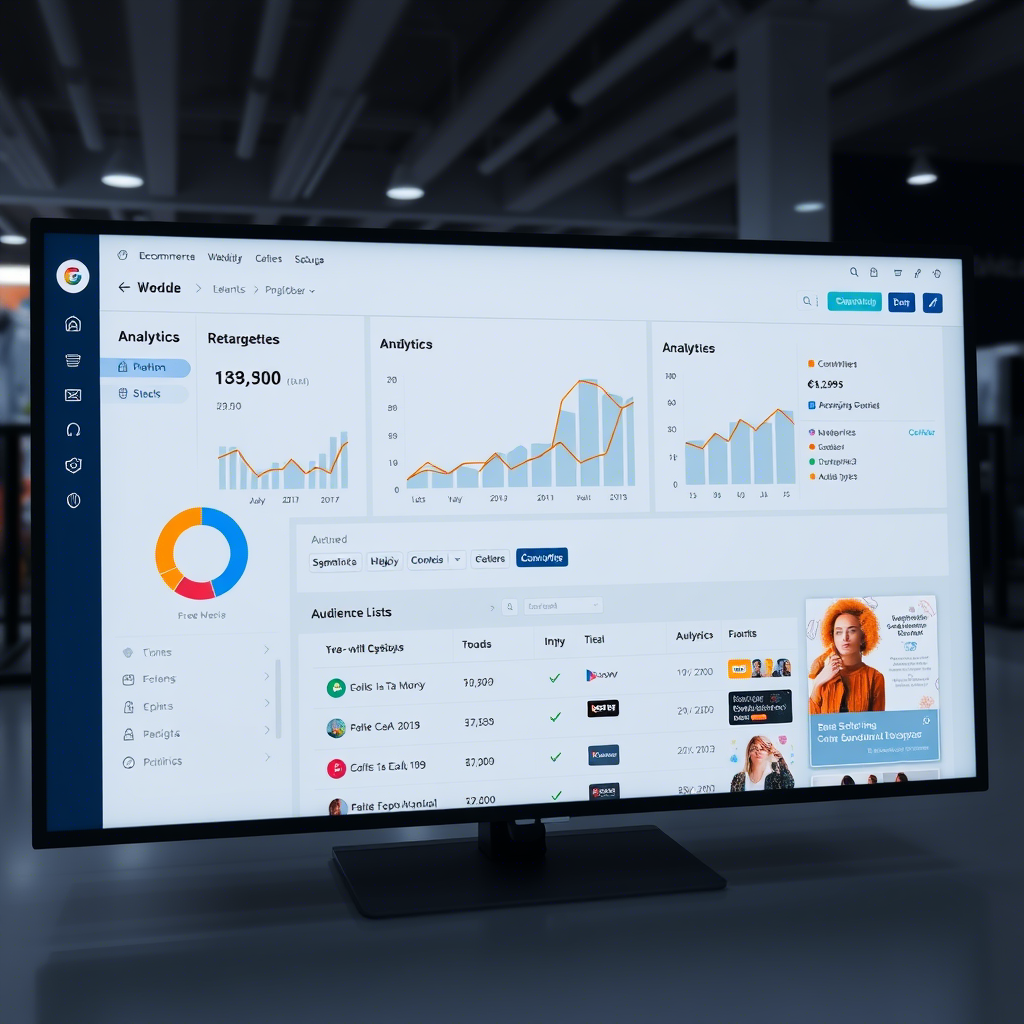Have you ever left a website after browsing products, only to see ads for those same items pop up everywhere you go online?
That’s retargeting in action—and it works wonders for ecommerce businesses. In today’s competitive digital landscape, simply driving traffic to your site isn’t enough. You need strategies that convert visitors into paying customers.
This is where retargeting campaigns come in. By re-engaging users who have already interacted with your brand, you can significantly boost sales and improve return on investment (ROI).
In this article, we’ll walk through how to set up effective retargeting campaigns tailored specifically for ecommerce websites, step by step.
Whether you’re just starting out or looking to refine your strategy, these tips will help you maximize results while keeping things simple and actionable.
1. Understanding the Power of Retargeting
Retargeting is essentially an advertising technique designed to remind people about your business after they’ve visited your site.
It leverages cookies to track user behavior and serve personalized ads across platforms like Google Ads, Facebook, Instagram, and more.
Studies show that 98% of visitors leave a website without making a purchase , which means there’s a huge opportunity to win them back using retargeting.
For instance, if someone adds an item to their cart but doesn’t check out, retargeting allows you to send targeted reminders until they complete the transaction.
The key here is relevance—by showing ads based on specific actions taken on your site, you create a sense of urgency and familiarity that drives conversions.
To get started, think about what kinds of behaviors you want to target: Did they browse certain categories? Abandon carts? Visit high-value pages? Once you define these behaviors, you can craft messages that resonate directly with each group.
2. Setting Up Your Pixel or Tag
The foundation of any successful retargeting campaign lies in implementing tracking pixels or tags correctly. These small snippets of code collect data about visitor activity on your site, enabling you to segment audiences later. Platforms like Facebook and Google offer straightforward instructions for adding their respective pixels:
- Facebook Pixel : Go to your Facebook Ads Manager and navigate to the Events Manager. From there, generate the pixel code and add it to your website header. Make sure to enable standard events such as Add to Cart, Initiate Checkout, and Purchase.
- Google Tag Manager : Use GTM to deploy Google Analytics and remarketing tags easily. Simply create new tags within the platform, link them to your Google Ads account, and configure triggers based on user actions.
Once installed, test your setup thoroughly to ensure everything is functioning properly. A common mistake many beginners make is forgetting to verify whether the pixel is firing correctly. Tools like Chrome extensions (e.g., Facebook Pixel Helper) can assist with troubleshooting.
3. Creating Targeted Audiences
Now that your tracking is live, it’s time to build audience lists. Most platforms allow you to segment users based on various criteria, such as:
- Time-based segments : Focus on recent visitors (e.g., last 7 days) versus older ones (e.g., last 30 days).
- Behavioral groups : Target users who viewed specific product pages, added items to their cart, or abandoned checkout processes.
- Custom combinations : Combine multiple conditions to create hyper-targeted lists, like “users who viewed shoes but didn’t purchase.”
For example, imagine running a shoe store. Instead of targeting all past visitors indiscriminately, you could create separate ad sets for men’s sneakers, women’s boots, and athletic gear. Personalization at this level ensures your messaging aligns perfectly with each group’s interests.
Additionally, consider excluding existing customers from your retargeting efforts unless you’re promoting upsells or cross-sells. Overexposing loyal buyers to generic ads may annoy them rather than engage them further.
4. Designing Compelling Ad Creative
Your ads are the face of your retargeting campaign, so they must be visually appealing and persuasive. Here’s how to design ads that stand out:
- Use dynamic product ads (DPAs) : Platforms like Facebook and Google Shopping let you automatically showcase products users interacted with. This reduces manual effort and increases relevance.
- Highlight benefits over features : Instead of focusing solely on what your product does, emphasize why it matters to the customer. For example, instead of saying “Eco-friendly packaging,” say “Reduce your carbon footprint.”
- Leverage social proof : Incorporate customer reviews, ratings, or testimonials to build trust.
- Create urgency : Limited-time offers, free shipping thresholds, or discounts for returning visitors can push undecided shoppers toward conversion.
Remember, consistency is crucial. Ensure your ad copy, visuals, and CTAs align with the experience users had on your site. If someone left because they were unsure about sizing, address that concern directly in your follow-up ad.
5. Measuring Success and Optimizing Results
Setting up a retargeting campaign is just the beginning. To truly succeed, you need to monitor performance and optimize continuously. Key metrics to track include:
- Click-through rate (CTR) : Indicates how engaging your ads are.
- Conversion rate : Shows how effectively your ads drive desired actions.
- Cost per acquisition (CPA) : Helps evaluate overall efficiency.
- Return on ad spend (ROAS) : Measures profitability relative to budget spent.
If some ads underperform, don’t hesitate to tweak elements like images, headlines, or landing pages. Split-testing (A/B testing) different versions can reveal what resonates best with your audience. Moreover, keep an eye on frequency caps—the number of times users see your ads—to avoid annoying potential customers.
Finally, remember that retargeting should complement—not replace—other marketing channels. Balance your approach by combining retargeting with prospecting strategies to reach both warm leads and cold audiences.
Conclusion
Retargeting campaigns are a powerful tool for boosting conversions and revenue for ecommerce businesses.
By understanding user behavior, setting up proper tracking, creating targeted audiences, designing compelling ads, and measuring results, you can unlock significant growth opportunities. Remember, the goal isn’t just to advertise—it’s to connect meaningfully with your audience and guide them along the buyer’s journey.
So, are you ready to take your ecommerce game to the next level? Start experimenting with retargeting today, and watch as your efforts translate into tangible results. Don’t forget to share your experiences or ask questions in the comments below—we’d love to hear from you!




